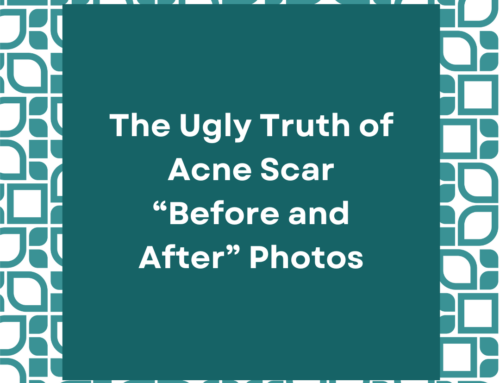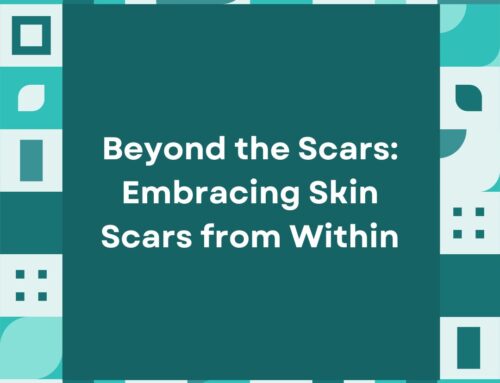Subcision for acne scars in Los Angeles and Beverly Hills
Subcision is a minimally invasive approach to treating acne scars. It has recently gained more popularity as individuals are looking for a more minimally invasive but more effective alternative to harsher treatments, such as ablative lasers.
Subcision corrects tethered scars and triggers new collagen production to give your skin a smoother, more even appearance.
In this blog, we are going to discuss how subcision is one of the most powerful methods for treating your acne scars and boosting your self-confidence.
How does subcision work?
Subcision works by releasing the tethers within your skin that “pin” your scar down. These tethers are composed of irregularly arranged collagen fibers. By using a needle or other probe-like instrument, the tethers are mechanically broken apart, allowing newer collagen to be produced and aligned in a more regular fashion.
What type of scars does subcision work on?
Subcision works primarily on rolling acne scars. These scars are uniquely characterized by fibrotic tethers in the dermis that give rolling scars their unique wavy appearance.
Subcision can also work on tethered boxcar scars, although it is difficult to differentiate between tethered boxcar scars and regular boxcar scars.
What types of scars do not respond to subcision?
Most ice pick scars and boxcar scars do not respond favorably to subcision, as both of these scar types lack tethering in the skin. Instead, alternative treatments, such as TCA CROSS or phenol CROSS, punch excision, dermabrasion, and ablative laser, would produce more noticeable results.
How is subcision performed?
Subcision is performed by using a needle, cannula, or other specialized probe, such as the Taylor Liberator, to mechanically sever the tethers in the skin. The choice of probe is influenced by both the type and distribution of scarring. Minor rolling scars are easily treatable with needles or cannulas.
However, tougher and more widespread rolling scars may need more reinforced instrumentation, such as the Taylor Liberator.
Do I need subcision?
You can tell if you need subcision by familiarizing yourself with the various acne scar types:
- Ice pick: Small, V-shaped depressions that extend to the deep dermis
- Boxcar: Geometric scars with vertical walls and a flat base – can be either shallow or deep
- Rolling: Wide, shallow scars that create a wavy appearance on the skin
Rolling tethered scars respond the best to subcision. You can tell if your scars are tethered by animating your face. For instance, if you engage your facial muscles and the shape of your scars changes drastically, similar to dimpling when you smile, your scars are likely tethered.
What is Taylor Liberator subcision?
The Taylor Liberator is a long metal probe with a W-shaped notch at the end. Its specialized tip was designed to more effectively capture tethers as the instrument is passed through the skin.
The concept behind the instrument was to improve complete breakage of fibrotic tethers in the skin, which was harder to achieve with small instruments, such as needles and cannulas.
One added benefit with the Taylor Liberator is that acne scars on one side of the face can be treated through one or two entry points. This feature appeases the concerns of patients who are scared that subcision will create new scars by having to puncture the skin so many times as seen with other instruments.
What is cannula subcision?
Cannula subcision, as the name suggests, is performed with a blunt, hollow instrument originally designed to deliver or withdraw fluids, gases, or medications. Due to their flexibility and blunt tip, cannulas are among the safest tools used for subcision to break tethers while minimizing harm to other skin structures, such as blood vessels and nerves.
One drawback with using cannulas for subcision is that their flexibility causes them to bend away from denser fibrotic tethers, leading to incomplete scar dissection. In these cases, more robust instruments, such as the Taylor Liberator would be favored.
What is needle subcision?
Subcision was first performed with simple injection needles due to their ease of manipulation. Doctors also began to use Nokor needles because of its sharper tip, which better facilitates severing of tethers. Needle subcision is still widely performed but has become less popular due to the same limitations with cannula subcision.
Do I need tumescent anesthesia with subcision?
Tumescent anesthesia, also known as hydrodissection, is performed by injecting a large volume of dilute anesthetic into the local treatment area.
The purpose of tumescent anesthesia is to not only numb the face before subcision but also lift the treatment area away from vital neurovascular structures in the face.
This makes more invasive forms of subcision, such as deep-layer or Taylor Liberator subcision, safer to perform.
You will notice that your cheeks will be really swollen after tumescent anesthesia. It will take approximately 48 to 72 hours for the liquid to naturally drain from your face. Numbness will also last for up to 10-12 hours.
You may notice lingering numbness in the treatment areas, which is a completely normal response to the instrument temporarily disturbing superficial nerves in your face.
What are the risks and benefits of subcision?
Normal transient risks of subcision include bleeding, bruising, and persistent swelling. These adverse effects will naturally go away within several weeks. Highly rare side effects include nerve damage or muscle weakness, infection, additional scarring, or nodule formation.
Benefits of subcision obviously include lifting of atrophic scars. Other benefits include improvement of deep wrinkles and creases. For some patients who have suffered from lumpiness in the face from autologous fat transfer, deep layer subcision can help redistribute the fat to create a smoother appearance.
How many sessions of subcision do I need?
The number of subcision treatments varies depending on the extent of acne scarring. More severe cases may require multiple sessions to see significant improvement. Taylor Liberator subcision was designed to avoid the need for repeated treatments by facilitating more complete severing of tethers.
What does downtime and recovery look like for subcision?
Patients should expect major swelling from tumescent anesthesia to go down in 2 days and the vast majority of swelling to go down in 2 weeks. After that, there will be residual or “micro-swelling” which takes anywhere from 6 months to a year to completely go away.
Are results from subcision permanent?
The majority of patients do not see regression after subcision after swelling has completely gone away. Some patients may see immediate results after the treatment, but some individuals may have to wait several weeks to several months for collagen to build to notice a difference.
Also keep in mind that swelling can camouflage scarring. Results may appear perfect at first but you will notice slight regression when the swelling goes away. However, from that point moving forward, scars should not get progressively worse.

Next-Generation Subcision – SHI Lift
At the Scar Healing Institute, we offer multi-layer subcision, using a combination of needles, cannulas, and an acne scar dissector called the Hazany Liberator. By using a variety of instruments to target different levels in the skin, we are able to remodel scars at superficial, medium, and severe depths. Collectively, we call our approach SHI Lift.
To see if you are a good candidate for this procedure, call the Scar Healing Institute team today and book a consultation with a team of the best acne scar specialists serving Los Angeles and Beverly Hills.
Schedule an Appointment
Scar Healing Institute
Scar Healing Institute is committed to developing the most effective treatments for scarring. Our team of scar revision specialists are continually inventing the latest technologies and formulas to deliver the best results for our patients.




